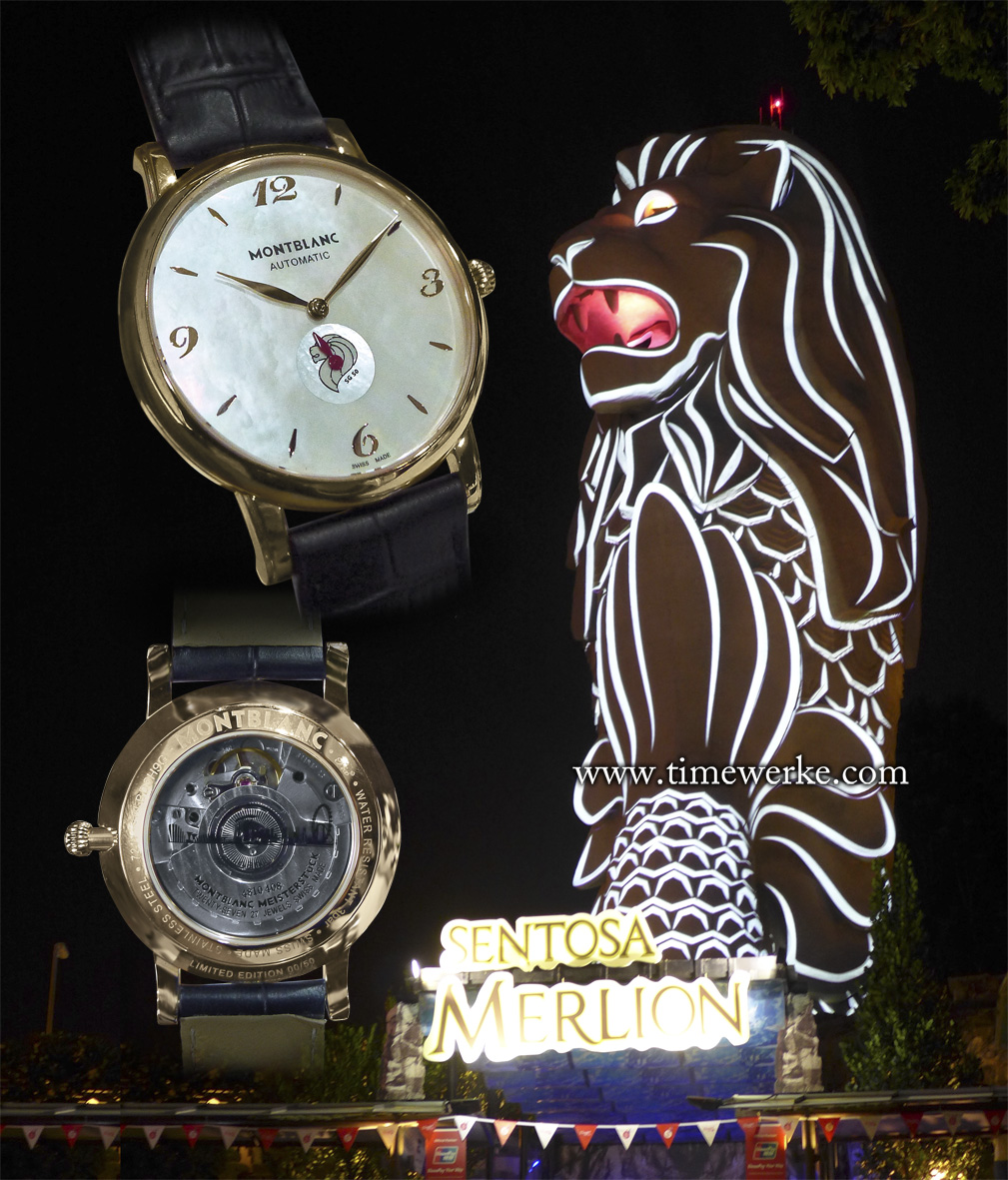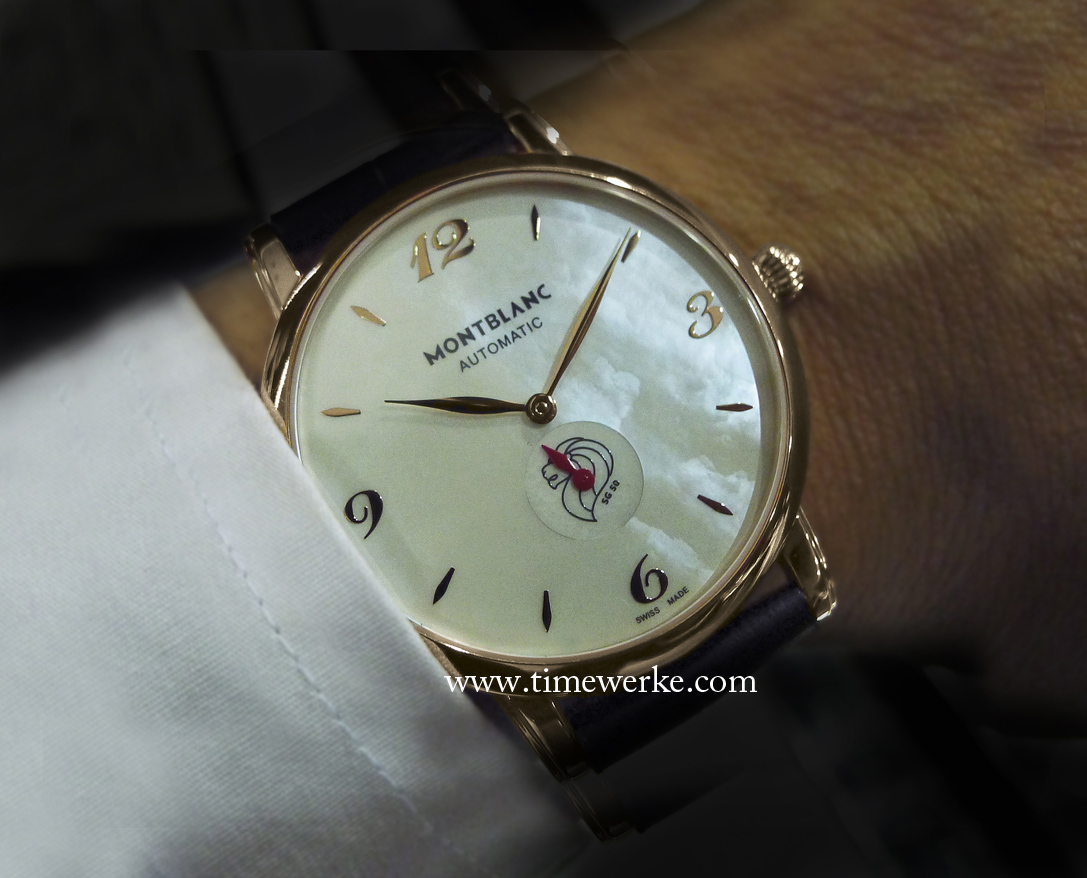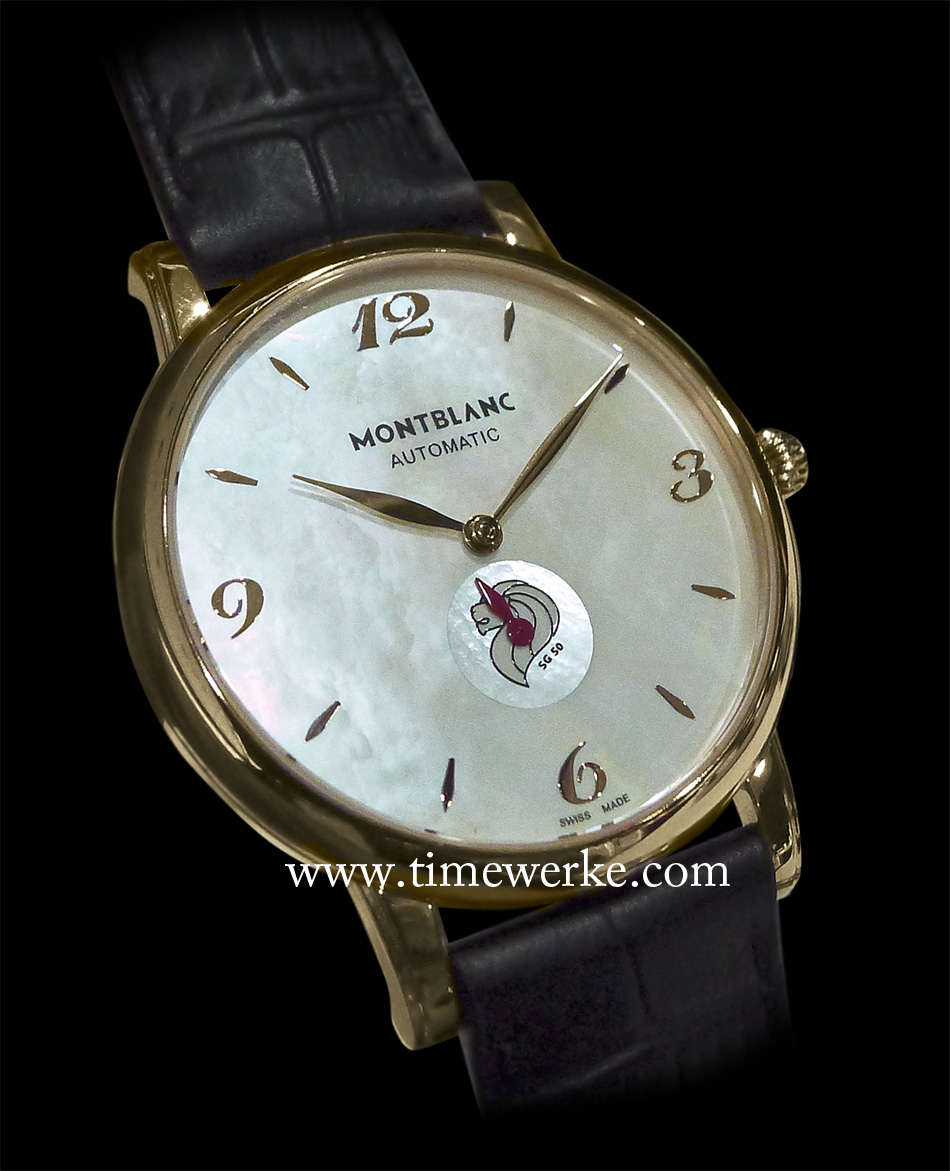
The Montblanc Star Classique Singapore Special Edition is a commemorative piece for the 50th anniversary of Singapore’s independence (1965 to 2015). Singapore’s lion head symbol is featured on the sweep seconds sub-dial. On the case back, Singapore’s skyline is featured on the sapphire crystal. On the right is the Sentosa Merlion lighted up thanks to projection mapping. Photos: © TANG Portfolio. Elfa / Timmy. Image of the Sentosa Merlion taken on 8 August 2015 at 9pm
One Montblanc special edition for 2015 is the Star Classique Singapore timepiece, a commemorative special edition for the 50th anniversary of Singapore’s independence (1965 to 2015).
The key feature is the lion head symbol found on the mother-of-pearl dial of the Star Classique Singapore. This stylised lion head is a national symbol of Singapore and represents courage, strength and excellence.
The lion head is in red and on a white background and follows the colours of the national flag. The lion’s mane has five partings, which like the five stars on the national flag, symbolise the country’s ideals of democracy, peace, progress, justice and equality.
While the stylised lion head, designed by Michael Lee, was introduced in 1986, how it became synonymous with Singapore dates back to the island state’s early days.
In the third century, the island of Singapore then was described by the Chinese as pu luo chung which means “island at the end of the peninsula”.
After the first settlements were established between 1298 and 1299, the island became known as Temasek, meaning “Sea Town”. Perhaps this was because the early community in the area were known in Malay as orang laut or “sea people” when translated to English.

On the wrist: the 39mm Montblanc Star Classique Singapore Special Edition in red gold. The lion head symbol represents courage, strength and excellence. © TANG Portfolio
How Singapore got its name comes from the most popular legend and that is because of Sang Nila Utama, who is said to be one of the three sons of an Indian prince, Raja Culan, from Palembang, the then capital of Srivijaya. Palembang is in the island of Sumatra.
Sang Nila Utama went exploring and one day in Bintan, he spotted this island and decided to sail over. While hunting on open ground on the island at Kuala Temasek, said to be the present day Padang near the Singapore River, he sighted a strange animal.
The animal disappeared before it could be positively identified it but it seemed that one of his men told him it was a lion. Taking the sighting as a good omen, Sang Nila Utama decided to say put and establish a city at Temasek, naming it Singapura.
Singapura is a Sanskrit word where singa or simha means “lion” and pura is “city”. This is why this island state is also known as the Lion City. Sanskrit is an ancient Indo-European language of India and is still used as a language of religion and scholarship.
Sang Nila Utama ruled for 48 years till his death, according to the Sejarah Melayu. He was buried “on the hill of Singapura” – known as Bukit Larangan then and Fort Canning Hill today.

Montblanc Star Classique Singapore Special Edition “Lion City” in red gold features a mother-of-pearl dial. The Montblanc Star Classique Singapore Special Edition is priced at SGD14,200. Part of the sales proceeds will be donated to the Pathlight School, the first autism-focused school in Singapore. Photos: © TANG Portfolio. Elfa / Timmy
Question is, was it a lion that Sang Nila Utama sighted? There is the Asiatic lion but this animal is found in India and it is highly unlikely that Singapore was one of its habitats. The strange animal could well have been the Malayan tiger which was more common in the region then.
British Zoologist John Harrison (1917 to 1972) believed that the animal could have been the golden cat or masked palm civet, based on clues from the Sejarah Melayu.
His son, Bernard Harrison, is probably a more familiar name to many Singaporeans today as he was the former CEO of the Singapore Zoo. He was the gentleman behind the world’s first Night Safari at the Singapore Zoo and there is even a book written about him called: Naked Ape, Naked Boss.
Regardless, the Singapore of today is still known as the “Lion City” and in more recent times, the “Garden City” because of its lush greenery even in urban environments thanks to the country’s former Prime Minister Lee Kuan Yew (1923 to 2015).
His “garden city” vision was first introduced on 11 May 1967 with the aim of transforming Singapore into a city abundant with greenery and a clean environment.
Other related articles that may be of interest on timewerke.com are:
i. Swatch SG50 watches: Wrist-flagged
ii. Longines Master GMT Singapore: Independence Day
iii. Audemars Piguet Floral Clock: AP Royal Oak with granite bezel?
iv. Jaeger-LeCoultre Grande Reverso Night & Day Singapore Special Edition: The day and night watch
